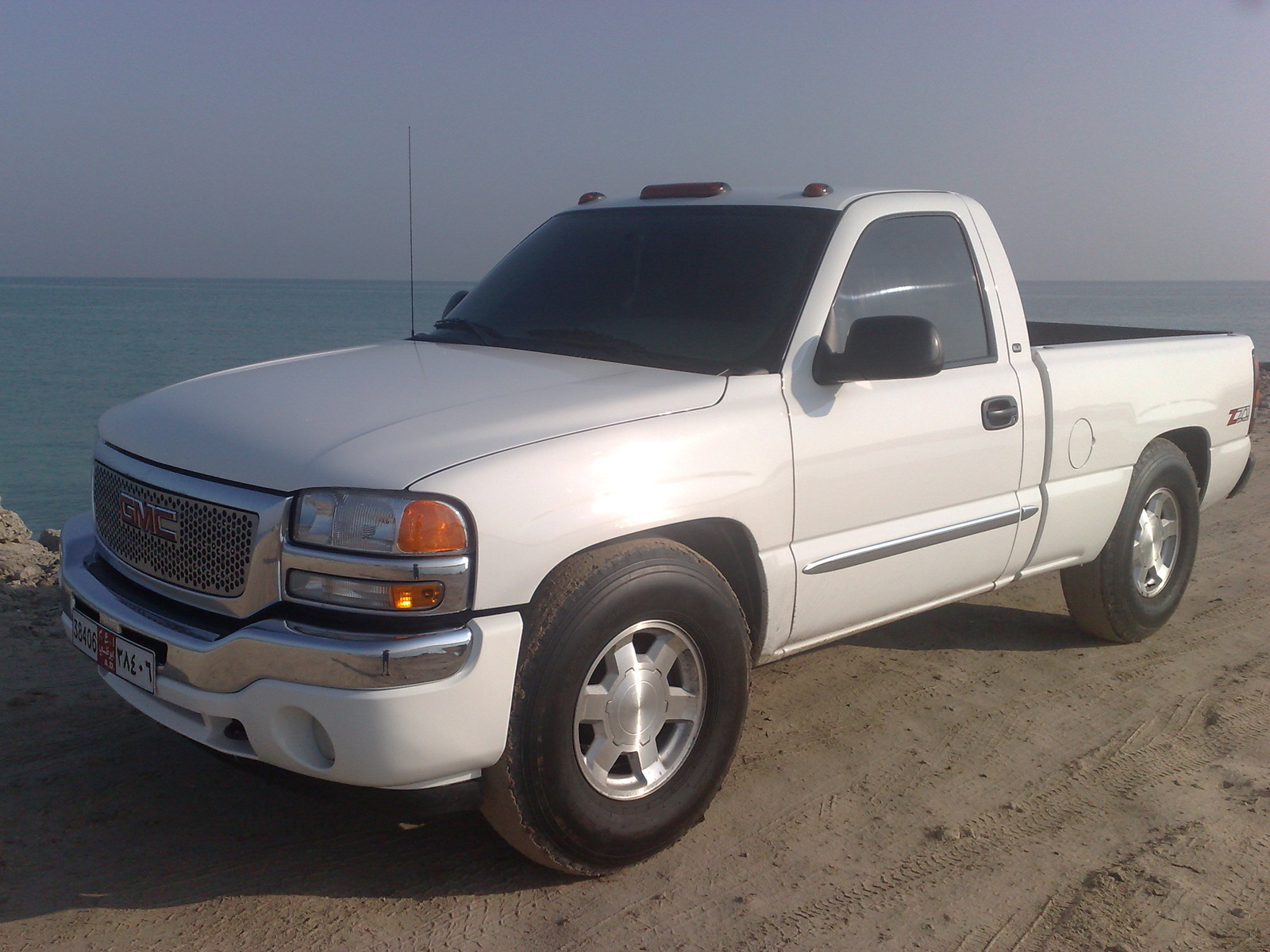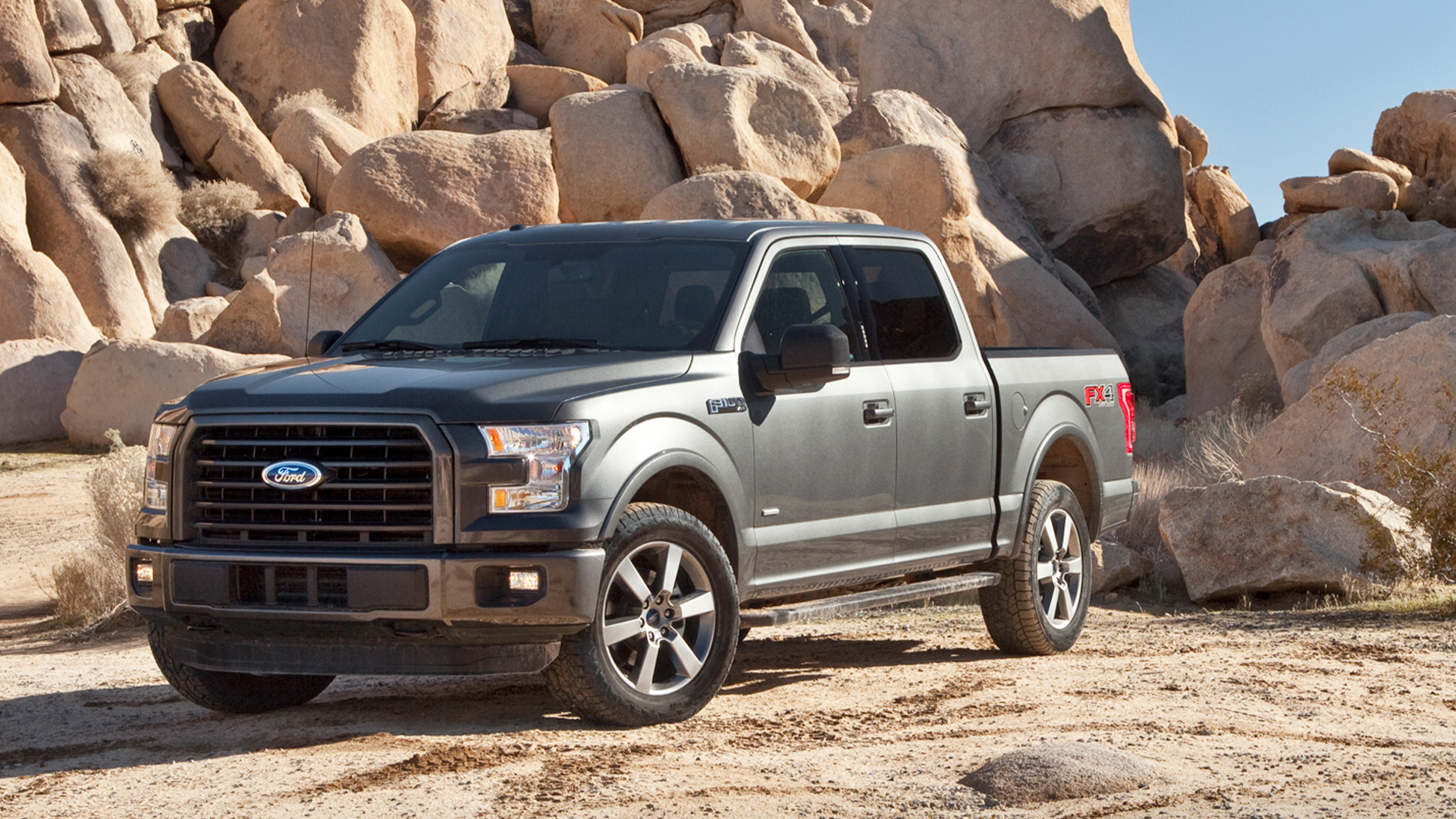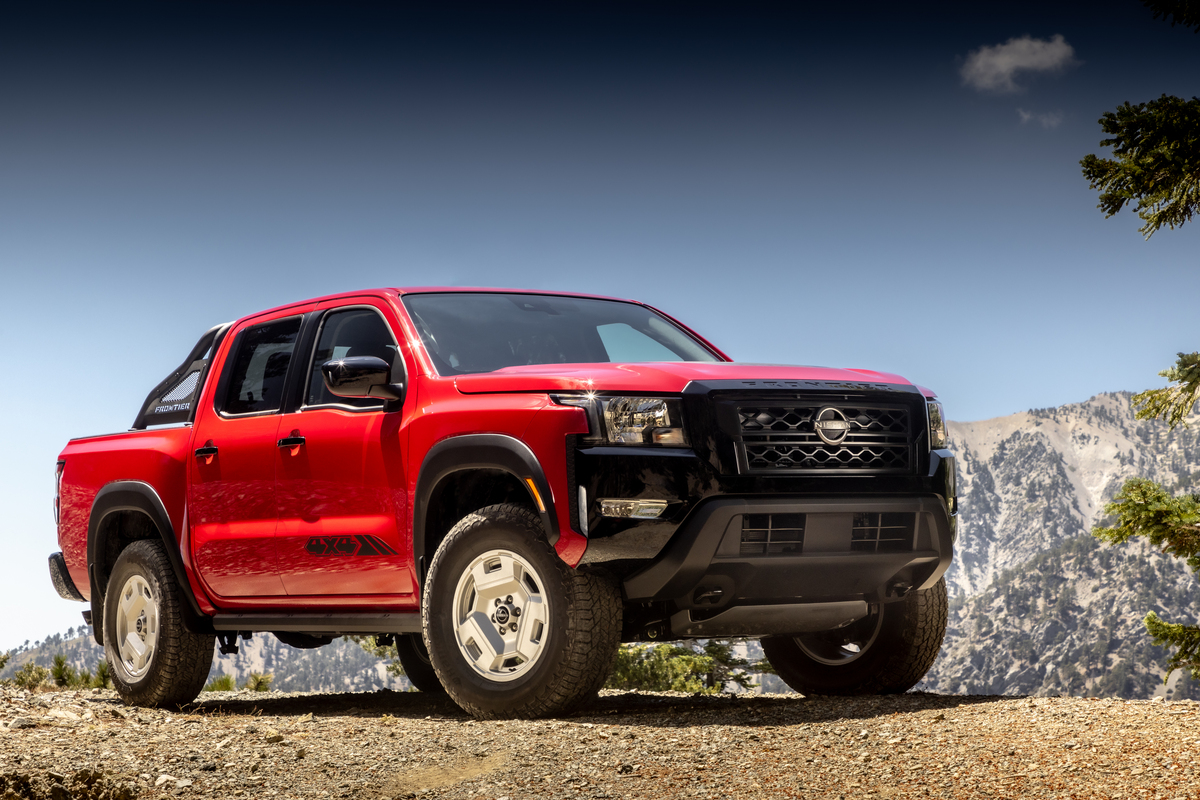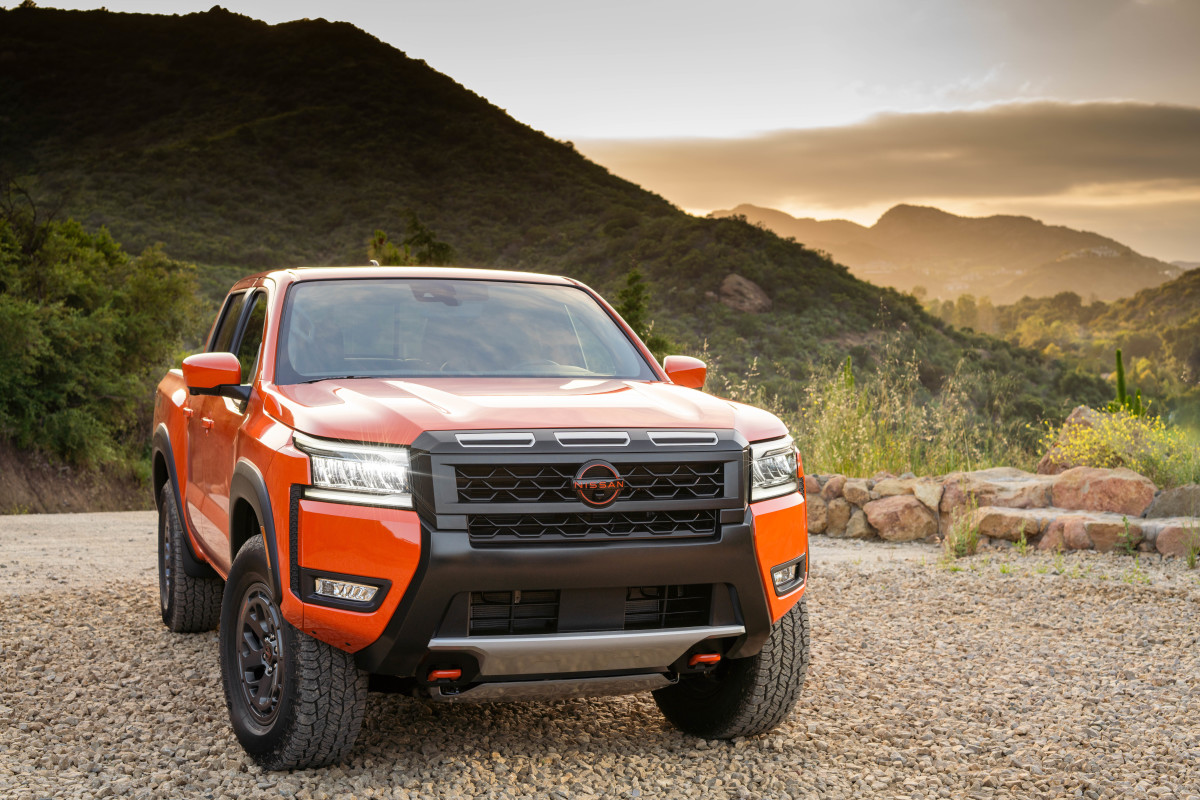The GMC Sierra 1500 is the lesser-known of General Motors’ full-size pickup trucks, but it hits the same high notes as the closely-related Chevrolet Silverado 1500. The two vehicles have much in common, which is worth reiterating to shoppers looking for a used truck. As a result, this buying guide to the GMC Sierra 1500 will also mention the Silverado frequently.
The first-generation GMC Sierra 1500 was introduced for the 1988 model year and was twinned with the Chevrolet C/K. In 1999, the second-generation GMC Sierra 1500 arrived, with the Chevrolet equivalent becoming the first-generation Silverado 1500. The heavy-duty 2500 and 3500 versions, which aren’t covered here but are relevant to the nameplate, were introduced over the next few years.
The Sierra 1500 full-size truck is currently in its fifth generation, which was introduced for the 2019 model year. That’s a long time in vehicle lifecycles, but there have been plenty of updates in the meantime. It boasts upscale design, great trailering capability, good connectivity features, and distinct trim levels with a variety of special features and enhancements to appeal to a wide variety of buyers, from locking differentials that enhance off-road performance to leather seating for serene highway cruising.
Our GMC Sierra 1500 buying guide looks at how the model has evolved over time, the best model years (and the worst), and how much you can expect to pay for one.
GMC Sierra 1500 Buying Guide: Cost, Reliability, and the Best Years to Buy
- Frequently Asked Questions
- GMC Sierra 1500 Pros and Cons
- GMC Sierra 1500 Generations
- Fifth Generation (2019-)
- Fourth Generation (2014-2018)
- Third Generation (2007-2013)
- Second Generation (1999-2006)
- First Generation (1988-1999)
Frequently Asked Questions
Which GMC Sierra 1500 years are the best?
If you can afford it, stick with a Sierra from the current (fifth) generation, 2019 and on. If you’re looking for the most reliable year, the 2020 model in particular has high predicted reliability ratings from J.D. Power.
What are the worst GMC Sierra 1500 years?
The fourth generation, from 2014 through 2018, was known for reliability problems with the trucks’ transmissions, while common issues for 2014 and 2015 models are engine knock and failing headlights. Some 2014 models were recalled for fire risk. Experts also recommend avoiding late second-generation models from 2001 on, because of poor crash test performance.
Is a used GMC Sierra 1500 a good deal?
It absolutely can be. We’d recommend that you buy a Sierra 1500 that’s been well-maintained, however, and avoid being tempted to pay for more power than you need.
GMC Sierra 1500 Pros and Cons
Pros:
- Lots of engine options
- Great tech in recent models
- Powerful and capable
Cons:
- Lots of problems in certain model years
- Can be expensive, even used
- Engine and trim lineups can overwhelm
GMC Sierra 1500 Generations
Fifth Generation (2019-)
The latest, fifth-generation Sierra 1500 is the more upscale of the GMC and Chevrolet full-size pickup truck siblings, although there are only minor differences between the two. GMC’s “We Are Professional Grade” tagline sums up styling differences between the brands, as GMC trucks’ cabins are near luxury in quality, although without many frills or embellishments. One interesting feature is the MultiPro Tailgate, which is a sort-of 'tailgate within a tailgate,' a smaller hinged section that pops up from the main gate, offering different configurations to maximize practicality.
The Sierra 1500 got a refresh for the 2022 model year, which brought updated styling and better infotainment functionality, as well as the availability of General Motors’ Super Cruise semi-automated hands-free driving system. The diesel engine was upgraded in 2023, but most of the changes over time have been minor trim or color tweaks.
The Sierra 1500 is available with a variety of powertrains for the fifth generation. The list includes a 2.7-liter turbocharged four-cylinder engine rated for 310 horsepower and 430 lb-ft of torque; a 4.3-liter V6 engine rated for 285 horsepower and 305 lb-ft, a 5.3-liter V8 good for 355 horsepower and 383 lb-ft, a 6.2-liter V8 rated for 420 horsepower and 460 lb-ft, and a 3.0-liter inline-six Duramax turbodiesel engine with 305 horsepower and a mighty 495 lb-ft (277 horsepower and 460 lb-ft for pre-2023 models). Transmission options depend on the engine, and include six-, eight-, and 10-speed automatics, while rear- and four-wheel drive are available.
In this latest generation, the GMC Sierra 1500 is offered in more trim levels than older models. The core lineup is Pro, SLE, Elevation, SLT, Denali, Denali Ultimate, AT4, and AT4X. The Denali and Denali Ultimate feature luxurious styling and premium interior materials. The Elevation and the AT4 have rugged styling, and the AT4X builds on that by adding heavy-duty off-road hardware and upgrades, such as skid plates, beefed-up dampers, a two-speed transfer case, and all-terrain tires. It also has 16-way power heated and ventilated front seats with a massage feature, so it’s comfortable, too.
This generation of Sierra 1500 is known to be a pretty reliable truck, and the 2020 model, in particular, has earned lots of satisfied customers. Pre-owned examples sold within the past three years will still be covered by factory warranty, too.
It should come as no surprise that late used models are the most expensive Sierras on the used market. Prices for the 2026 model year start at $40,895 (including destination fee) for Pro trim at the time of writing. CarGurus pricing data shows that those in search of a recent used GMC Sierra 1500 should budget an average of about $35,000 for a 2019 model and an average of about $65,000 for a 2025 model, although there’s little data for the 2025 model year.
Fourth Generation (2014-2018)
The fourth generation of Sierra features more aluminum in its underbody and engine than its predecessor, for lighter weight and better fuel efficiency. Most versions have a seven- or eight-inch touch screen infotainment system, depending on year and trim, and the majority have Bluetooth, Apple CarPlay, and Android Auto. The Sierra 1500 was refreshed for 2016 with a new front-end design and the introduction of the aforementioned smartphone integration.
This Sierra 1500 model was available with a 4.3-liter V6 rated for 285 horsepower and 305 lb-ft, a 5.3-liter V8 with 355 horsepower and 383 lb-ft, and a hefty 6.2-liter V8 that boasts ratings of 420 horsepower and 460 lb-ft, as well as an impressive maximum towing capacity of 12,000 pounds. Depending on the engine, there’s a six- or eight-speed automatic transmission, and both rear- and four-wheel drive are available, though not every trim or engine was available with both.
This generation features base Standard, SLE, SLT, and Denali trims. The Standard is designed for commercial duty or job site use, but still well-equipped with features such as Android Auto and Apple CarPlay. At the top end, the GMC Sierra 1500 Denali has upscale luxury and comfort amenities, such as power-adjustable and cooled front seats and a Bose audio system, plus aesthetic touches such as tasteful chrome trim and a distinct grille design.
Be careful with Sierras from this generation. You don’t need to avoid them entirely, but if you want the best dependability aim for a later example and be thorough on your test drive and at the dealership. Model years 2014 through 2018 are known for reliability problems with transmissions and 2015 models, in particular, are known for loud engine noises. Some 2014 GMC Sierra 1500 models were recalled for a fire risk, and a poor headlight design on the 2014 and 2015 models made for low illumination of the road ahead, significant enough for a class-action lawsuit against General Motors.
According to CarGurus pricing data, average values for this generation of Sierra range from about $20,000 for a 2014 model to about $30,000 for a 2018 example. Prices have dropped consistently for this generation, both year-over-year and according to more recent sales.
Third Generation (2007-2013)
The third-generation GMC Sierra 1500 was a full redesign, although some engines were carried over from the second generation. The body featured better aerodynamics for improved fuel economy ratings, using design and build techniques shared across the GM truck and SUV lineup. This Sierra was available with regular, extended cab, and crew cab configurations. A refresh in 2010 upgraded some interior trim and paired a new transmission with one of the V8 engines, and another refresh in 2012 upgraded the infotainment system.
The powertrain lineup for this generation included a 4.3-liter Vortec V6 rated for 195 hp and 260 lb-ft. The 4.8-liter Vortec V8 came in 295- and 302-hp versions, with 305 lb-ft of torque. The 5.3-liter Vortec V8 made 315 hp and either 335 or 338 lb-ft. The 6.0-liter Vortec V8 provided 367 hp and 375 lb-ft. And finally, a 6.2-liter Vortec V8 offered 403 hp and 417 lb-ft. Rear- and four-wheel drive were available, and most of the lineup got a six-speed automatic transmission.
Trims for this generation included LT, SLE, SLT, Z71, and Denali versions.
The third-generation Sierra is not known for widespread problems. Still, it’s important to shop carefully as you would with any used vehicle.
CarGurus pricing data shows that you can buy a third-generation GMC Sierra for an average of about $10,000 to around $15,000. Prices for this generation are down almost consistently, by double-digit percentages year-over-year and experienced smaller declines recently.
Second Generation (1999-2006)
The second-generation GMC Sierra 1500 was introduced for 1999. It’s based on the GM GMT800 architecture shared with the Chevrolet Silverado 1500, as well as GM SUVs such as the Chevy Suburban and the GMC Yukon. A real workhorse, it was introduced with regular cab and extended cab versions, with the crew cab coming later, as well as three bed lengths, although not all cab styles and bed lengths could be paired together. A 2003 refresh introduced updated front-end and cabin styling and some new wheel designs.
This generation also featured General Motors’ first hybrid powertrain for a passenger vehicle, introduced simultaneously to the Sierra 1500 and the Silverado for the 2004 model year. This truck was limited in availability and discontinued in 2009.
The second-generation powertrain lineup offered a 4.3-liter Vortec V6 rated for 195 (later 200) hp and 260 lb-ft. The 4.8-liter Vortec V8 increased from 255 to 285 hp and 285 to 295 lb-ft of torque over the years. A 5.3-liter Vortec V8 engine was similarly improved over the course of the generation, with ratings incrementally rising from 270 to 310 hp and 315 to 335 lb-ft. The 6.0-liter Vortec V8 was only available in the C3/Denali in the Sierra 1500 lineup, though it was also offered in some Silverado and Heavy Duty models. This engine boasted ratings of 325 hp and 370 lb-ft. Depending on the engine, the Sierra 1500 got a four-speed automatic or a five-speed manual transmission. Rear- and four-wheel drive were available.
The lineup was simple compared to later years, focusing on base and Work Truck (WT) versions, but there was one notable Sierra variation—the upscale C3, which was renamed Denali in 2002, a name that carries on to this day. There was also a Z71 off-road package available for both the Sierra 1500 and Silverado 1500. Notably, the Chevy Silverado got several more variations than the Sierra, including the high-output SS, Vortec High Output, and VortecMAX versions.
Experts recommend avoiding the late second-generation models from 2001 on because of poor crash test performance, and some owners note that brake lines are prone to rusting. On the flip side, the 2006 model has had many satisfied owners over the years, with plenty of praise for engine reliability and build quality.
This generation of Sierra 1500 is generally affordable, with average sale prices hovering at or below the $10,000 mark according to CarGurus data. Prices are down year-over-year, but values for the earlier versions have rebounded a little.
First Generation (1988-1999)
The first-generation GMC Sierra debuted for the 1988 model year on the GMT400 platform. This generation introduced a slightly more aerodynamic, rounded design that improved both aesthetics and fuel efficiency, and GMC would continue down this path with subsequent generations. The GMT400-based Sierra remained in production through 1998 for light-duty models, with heavy-duty variants continuing through 2000.
Under the hood, the GMT400 Sierra offered a diverse powertrain lineup to suit various needs and budgets. Base models featured a 4.3-liter V6, while gasoline V8 options included the 5.0-liter and 5.7-liter small-block engines. A major milestone came in 1996 when GMC introduced the Vortec engine family, bringing improved fuel injection technology and better performance across the range. For heavy-duty applications, buyers could opt for the 6.5-liter turbodiesel V8 or the powerful 7.4-liter big-block V8, the latter producing up to 290 horsepower and 410 lb-ft of torque. Transmission options included both manual and automatic configurations, with four-speed automatics becoming increasingly common as the generation progressed.
The GMT400 generation proved noteworthy for several innovations that would become pickup truck standards. GMC introduced an extended cab configuration with rear-hinged third doors in 1992, improving access to the rear seating area and setting a trend the industry would follow. This generation also saw continuous refinement in ride quality and interior appointments, as GMC worked to position its trucks as viable daily drivers rather than purely utilitarian vehicles. The longevity of the GMT400 platform—spanning over a decade—demonstrated its fundamental soundness and market acceptance, establishing the Sierra nameplate as a cornerstone of GMC's lineup that would carry forward into future generations.
Today, prices for first-generation GMC Sierra pickup trucks range from sub-$5,000 (for high-mileage, rough examples) to north of $35,000 for pristine collector-quality vehicles. Most can be found in the $5,000-$15,000 range.





